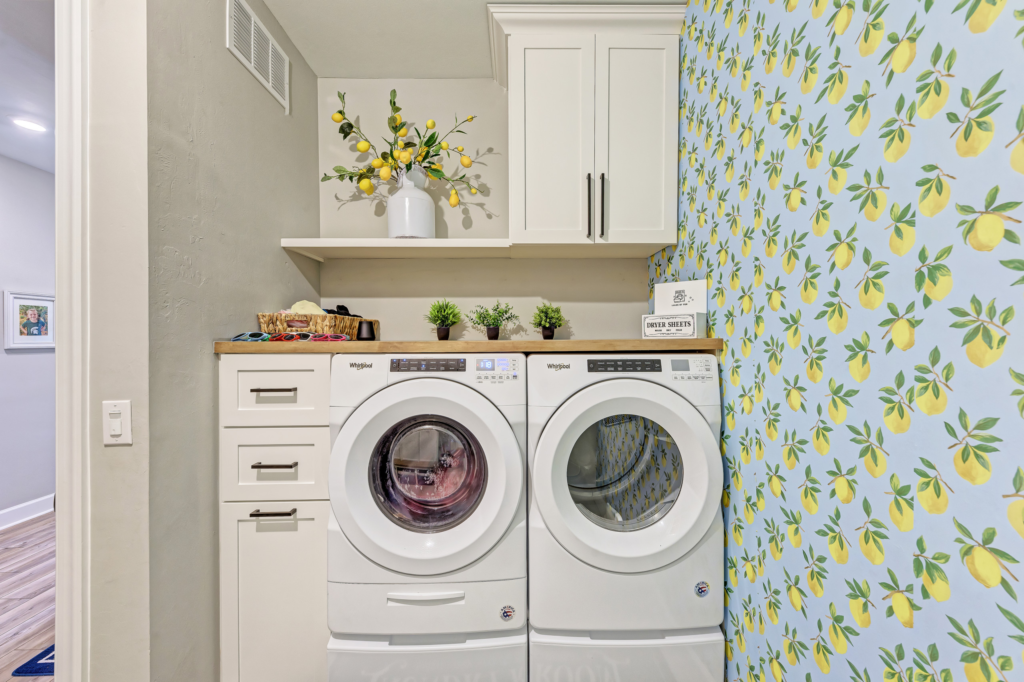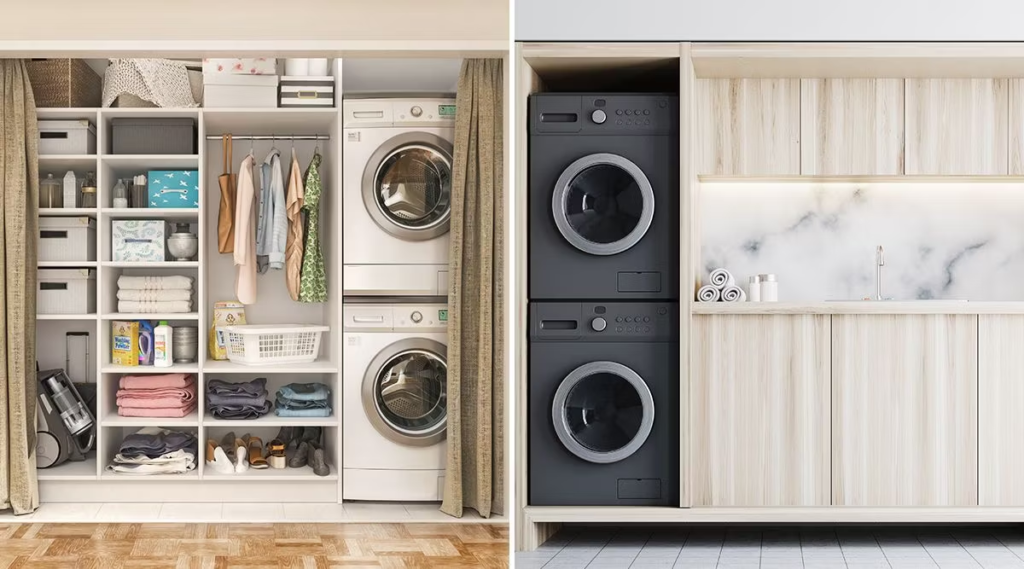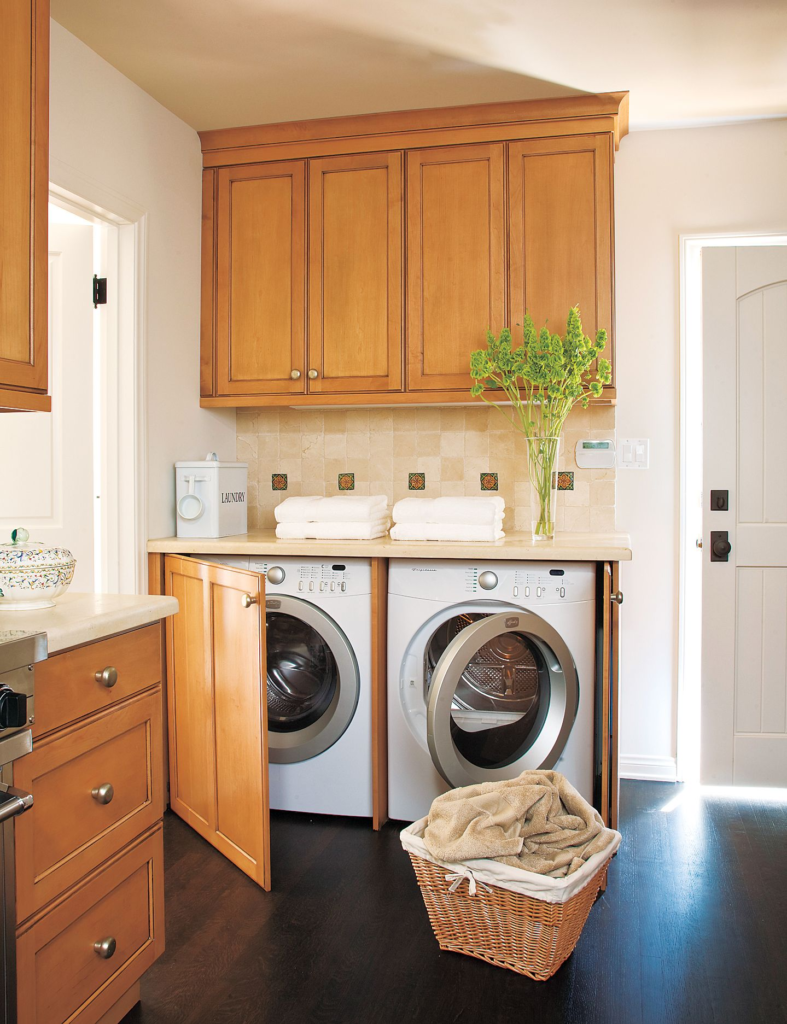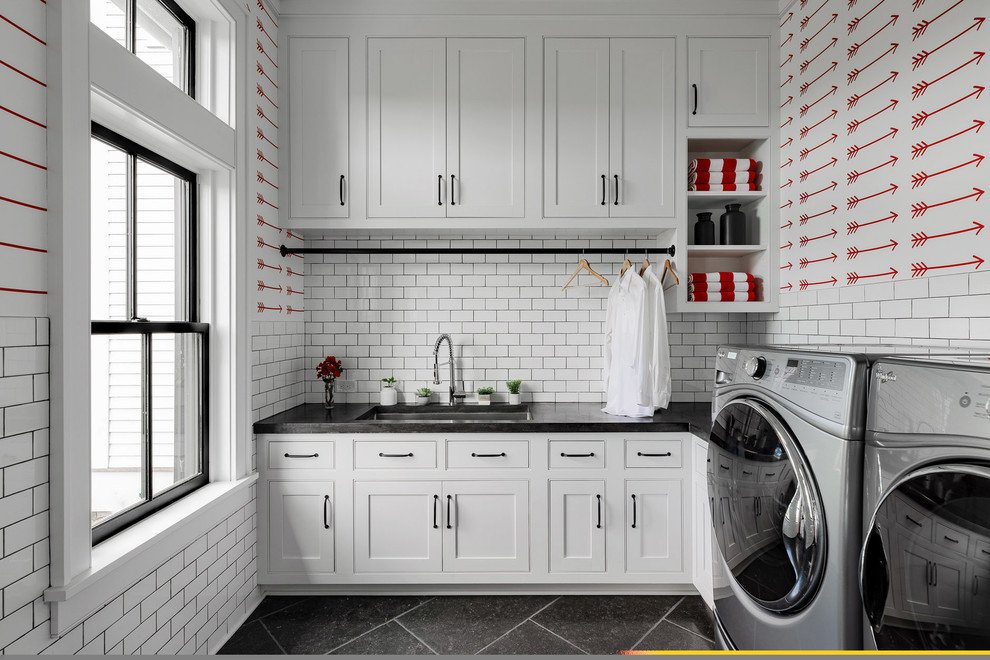In a home, the laundry room often serves as a multifunctional space, handling more than just washing and drying clothes. As such, designing an efficient and ergonomic laundry room is crucial for maximizing functionality, comfort, and productivity. From layout considerations to ergonomic practices, a well-designed laundry room can transform the mundane task of laundry into a streamlined, efficient process. This article will delve into effective layouts and ergonomic principles to optimize your laundry room.
Table of Contents

Understanding the Purpose of the Laundry Room
Before diving into design specifics, it’s important to recognize the roles a laundry room plays. Apart from washing and drying clothes, it may also accommodate tasks such as sorting, folding, ironing, and storage of cleaning supplies. A well-planned laundry room must therefore support these activities without causing physical strain or operational inefficiencies.
Layout Considerations
1. Space Utilization
- Size and Shape: The size and shape of the laundry room will significantly influence its layout. Small, narrow spaces require different strategies compared to larger, more open areas. For small rooms, consider compact appliances and vertical storage to maximize space. In larger rooms, you can afford to include additional features such as a countertop or sink.
- Flow and Accessibility: Ensure that the layout facilitates a smooth workflow. For instance, position the washing machine and dryer close to the area where clothes are stored to minimize the distance clothes need to travel. The process should ideally follow a logical sequence: sorting, washing, drying, folding, and storing.
2. Appliance Placement

- Height and Reach: Place appliances at a comfortable height to avoid bending or stretching. Front-loading machines are ideal for easy access and can be stacked to save space if necessary. Ensure that the washer and dryer are accessible and that their controls are at a convenient height.
- Ventilation: Adequate ventilation is crucial, especially for dryers, which produce heat and moisture. Ensure that there is proper airflow around appliances and that vents are not obstructed.
3. Work Zones
- Sorting Area: Allocate a space for sorting clothes before washing. This can be a simple table or a designated countertop. Including bins or baskets for different types of laundry (e.g., whites, colors, delicates) can help streamline the process.
- Folding and Ironing Area: A dedicated space for folding and ironing clothes can significantly enhance efficiency. Consider installing a countertop at a comfortable height or a built-in ironing board that can be folded away when not in use.
- Storage Solutions: Incorporate cabinetry or shelves for storing laundry supplies such as detergents, fabric softeners, and cleaning tools. High shelves or cabinets above the washer and dryer can utilize vertical space effectively.
Ergonomic Design Principles
1. Work Surface Height

- Comfortable Heights: Ensure that work surfaces are at an ergonomic height to prevent strain. For most people, a countertop height of around 36 inches works well for folding clothes. When installing shelves or cabinets, make sure they are within easy reach.
2. Lighting
- Task Lighting: Adequate lighting is essential for tasks like sorting and folding laundry. Overhead lighting combined with task lighting above work areas can reduce eye strain and improve visibility.
- Natural Light: If possible, incorporate natural light into the design. Windows not only improve visibility but also create a more pleasant environment. Ensure that window treatments do not obstruct light and that they are easy to open and close.
3. Ergonomic Accessories
- Pull-Out Bins: Incorporate pull-out bins or drawers to reduce bending and reaching. These can be used for laundry sorting or for storing cleaning supplies.
- Adjustable Shelves: Adjustable shelving allows you to customize the space according to your needs. This flexibility can accommodate changing storage requirements over time.
Design Tips for Efficiency
1. Integrated Technology

- Smart Appliances: Consider investing in smart appliances that offer features like remote control, notifications, and energy efficiency. These can streamline laundry processes and improve convenience.
- Water and Energy Efficiency: Choose appliances with high energy and water efficiency ratings to reduce utility costs and environmental impact. Modern machines are designed to be more efficient and eco-friendly.
2. Ventilation and Climate Control
- Humidity Control: Install a dehumidifier or a ventilation system to manage moisture levels and prevent mold growth. Proper ventilation is particularly important in smaller or enclosed laundry rooms.
- Climate Considerations: If the laundry room is located in a particularly hot or cold area of the house, consider installing heating or cooling solutions to maintain a comfortable temperature year-round.
3. Multi-Functional Features
- Sink Integration: If space permits, include a sink for pre-treating stains or hand-washing delicate items. A deep sink with a high faucet can be particularly useful.
- Built-In Ironing Board: A built-in or fold-down ironing board can save space and ensure that ironing is convenient and accessible.
Safety Considerations

1. Electrical Safety
- Proper Wiring: Ensure that electrical outlets are properly installed and that they meet local codes. Laundry appliances require significant power, so proper wiring is essential to avoid hazards.
- GFCI Outlets: Install Ground Fault Circuit Interrupter (GFCI) outlets to prevent electrical shocks, particularly in areas where water is present.
2. Child Safety

- Secure Appliances: If you have young children, ensure that appliances have childproof features or are installed in a way that prevents unsupervised access.
- Safe Storage: Store laundry detergents and other chemicals in high cabinets or locked drawers to keep them out of reach of children.
Conclusion
Designing an efficient and ergonomic laundry room involves a careful balance of functionality, comfort, and space management. By considering factors such as layout, appliance placement, ergonomic design, and safety, you can create a laundry room that enhances productivity and reduces physical strain. From maximizing space utilization to integrating modern technology, each design choice contributes to a more effective and enjoyable laundry experience. Investing time and effort into planning and designing your laundry room will not only improve its efficiency but also make laundry chores a more pleasant and manageable part of your routine.
FOR MORE INFORMATION, VISIThttps://brooklynlaundryroom.com/
FAQ
1. What are the key factors to consider when planning a laundry room layout?
When planning a laundry room layout, consider the following factors:
- Space Size and Shape: Tailor your design to the dimensions and layout of the room.
- Workflow: Arrange appliances and work areas to follow a logical sequence (sorting, washing, drying, folding).
- Appliance Placement: Position machines for ease of access and ensure proper ventilation.
- Work Zones: Create dedicated areas for sorting, folding, ironing, and storing supplies.
- Storage Solutions: Utilize vertical space with cabinets or shelves.
2. How can I make a small laundry room more functional?
To enhance a small laundry room:
- Opt for Compact Appliances: Use stackable or slim-profile washers and dryers.
- Incorporate Vertical Storage: Install high cabinets or shelves to maximize space.
- Use Multi-Functional Furniture: Choose folding tables or ironing boards that can be stored away when not in use.
- Consider Wall-Mounted Solutions: Install wall-mounted racks or baskets for additional storage.
3. What is the ideal height for countertops and work surfaces in a laundry room?
For most people, a countertop height of around 36 inches (91 cm) is comfortable for tasks such as folding clothes. Ensure that the height of other work surfaces, such as ironing boards or sinks, is adjustable or suited to your ergonomic needs.
4. How can I improve lighting in my laundry room?
- Install Task Lighting: Use focused lights above work areas for better visibility.
- Use Overhead Lighting: Ensure general illumination with bright, even lighting across the room.
- Incorporate Natural Light: If possible, add windows or skylights to provide natural light, making the space feel more open and pleasant.
5. What are some ergonomic accessories that can enhance my laundry room?
- Pull-Out Bins: These can be used for sorting laundry or storing supplies, reducing the need to bend and reach.
- Adjustable Shelving: Allows customization of storage height to suit your needs.
- Built-In Ironing Board: A fold-down ironing board can save space and be conveniently stored away.
6. How can I ensure safety in my laundry room?
- Electrical Safety: Install GFCI outlets and ensure that wiring meets local codes to prevent electrical hazards.
- Child Safety: Keep detergents and chemicals in high or locked cabinets, and secure appliances to prevent unsupervised access by children.
- Ventilation: Ensure proper ventilation to avoid moisture buildup and reduce the risk of mold.
7. What are the benefits of incorporating smart appliances into a laundry room?
Smart appliances offer:
- Remote Control: Operate and monitor appliances via smartphone apps.
- Energy Efficiency: Features that reduce water and electricity usage.
- Convenience: Notifications and alerts for cycle completion or maintenance needs.
8. How can I manage moisture and humidity in my laundry room?
- Install a Dehumidifier: Helps control humidity and prevent mold growth.
- Ensure Proper Ventilation: Use exhaust fans or open windows to improve air circulation and remove excess moisture.
9. What features should I consider when choosing appliances for a laundry room?
- Size and Capacity: Match appliances to your space and laundry needs.
- Efficiency Ratings: Look for energy and water-efficient models to save on utility costs.
- Ease of Use: Choose appliances with user-friendly controls and features.
10. Can I design a laundry room with an integrated sink?
Yes, incorporating a sink can be highly beneficial for pre-treating stains or washing delicate items. Ensure the sink is deep enough and installed at a comfortable height to enhance its functionality.
